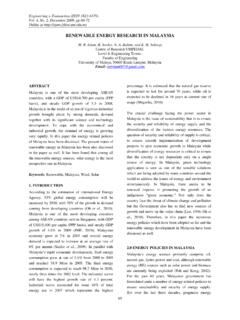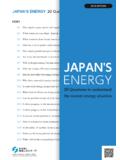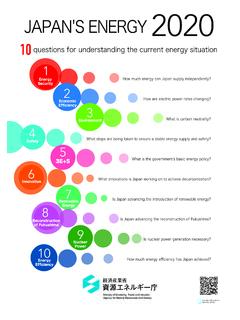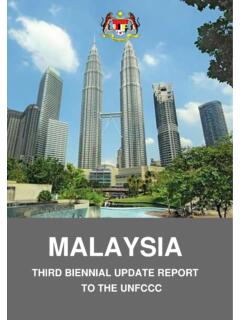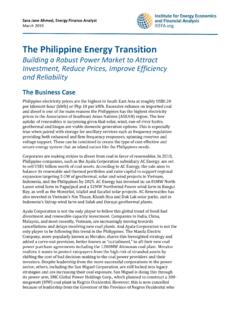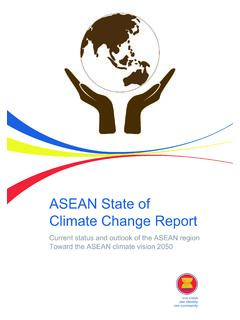Transcription of Philippines Wind Energy Resource Atlas Development
1 Philippines Wind EnergyResource Atlas DevelopmentNovember 2000 nrel /CP-500-28903 Dennis ElliottPresented at the Business and Investment Forum forRenewable Energy and Energy Efficiency in Asia andthe Pacific RegionKuala Lumpur, MalaysiaSeptember 4 7, 2000 National renewable Energy Laboratory1617 Cole BoulevardGolden, Colorado 80401-3393 nrel is a Department of Energy LaboratoryOperated by Midwest Research Institute Battelle BechtelContract No. DE-AC36-99-GO10337 NOTICEThe submitted manuscript has been offered by an employee of the Midwest Research Institute (MRI), acontractor of the US Government under Contract No. DE-AC36-99GO10337. Accordingly, the USGovernment and MRI retain a nonexclusive royalty-free license to publish or reproduce the publishedform of this contribution, or allow others to do so, for US Government report was prepared as an account of work sponsored by an agency of the United Statesgovernment. Neither the United States government nor any agency thereof, nor any of their employees,makes any warranty, express or implied, or assumes any legal liability or responsibility for the accuracy,completeness, or usefulness of any information, apparatus, product, or process disclosed, or representsthat its use would not infringe privately owned rights.
2 Reference herein to any specific commercialproduct, process, or service by trade name, trademark, manufacturer, or otherwise does not necessarilyconstitute or imply its endorsement, recommendation, or favoring by the United States government or anyagency thereof. The views and opinions of authors expressed herein do not necessarily state or reflectthose of the United States government or any agency electronically at for a processing fee to Department of Energyand its contractors, in paper, Department of EnergyOffice of Scientific and Technical Box 62 Oak Ridge, TN 37831-0062phone: : : for sale to the public, in paper, Department of CommerceNational Technical Information Service5285 Port Royal RoadSpringfield, VA 22161phone: : : ordering: on paper containing at least 50% wastepaper, including 20% postconsumer waste1 Philippines Wind Energy Resource Atlas DevelopmentDennis L. ElliottNational renewable Energy Laboratory1617 Cole Boulevard, Golden, COUSAA bstractThis paper describes the creation of a comprehensivewind Energy Resource Atlas for the Philippines .
3 Theatlas was created to facilitate the rapid identificationof good wind Resource areas and understanding of thesalient wind characteristics. Detailed wind resourcemaps were generated for the entire country using anadvanced wind mapping technique and innovativeassessment methods recently developed at theNational renewable Energy Laboratory. Thetechnique uses Geographic Information Systems toproduce high-resolution (1 square kilometer) annualaverage wind Resource maps. In addition to theannual average wind Resource distribution, theseasonal and diurnal variability and other salientwind characteristics were analyzed. The windmapping results show many areas of good toexcellent wind Resource throughout much of thePhilippines, particularly in the northern and centralregions. The total wind electric potential from areaswith good to excellent wind Resource isconservatively estimated to be 76,000 megawatts ofinstalled capacity or approximately 195 billionkilowatt hours per year.
4 Even if only a small fractionof this potential can be readily developed, this stillrepresents a substantial wind potential that is muchgreater than estimated in previous studies. Westrongly recommend that wind measurementprograms be conducted to validate the resourceestimates and to refine the wind maps and assessmentmethods where Philippines wind mapping and assessmentproject was initiated to define the wind resourceavailability and to facilitate and accelerate the use ofwind Energy technologies both for utility-scalegeneration and off-grid wind Energy applications inthe Philippines . This major project was the first of itskind undertaken for the Philippines . The key to thesuccessful completion of the project was acomputerized wind Resource mapping techniquerecently developed at the National renewable EnergyLaboratory ( nrel ), a U. S. Department of Energy (DOE) laboratory.
5 The technique uses GeographicInformation Systems (GIS) software to produce high-resolution (1 square kilometer [km2]) wind project evolved through the cooperation andassistance of Winrock International and severalPhilippine agencies. Upon learning of nrel sadvanced wind mapping capability, the WinrockInternational Philippines renewable Energy ProjectSupport Office (REPSO) and Preferred Energy , Inc.,worked with other interested parties in thePhilippines to propose and fund the Development of anational Wind Energy Resource Atlas . The PhilippineCouncil for Industry and Energy Research andDevelopment, of the Department of Science andTechnology, and the Philippines National OilCompany each provided funding for the studythrough Winrock International. DOE also providedsignificant funding for the Development of the windenergy Resource Atlas , and the Agency forInternational Development supported the overallcoordination and data gathering for the wind atlasdevelopment effort.
6 The Philippines National PowerCorporation (NPC) supported the project bycontributing wind-monitoring data collected at 14prospective wind Energy sites and by providing othertechnical International and REPSO had the leadresponsibility in administering this project and incollaborating with the Philippine organizations andNREL on project activities. nrel had the technicallead for the wind Resource analysis and mappingactivities. The primary goal was to develop detailedwind Resource maps for all regions of the Philippinesand to produce a comprehensive wind Resource atlasdocumenting the mapping document Wind Energy Resource Atlas of thePhilippines (Elliott et al. 1999) presents the windresource analysis and mapping results for thePhilippines project. The wind Resource maps werecreated at nrel using its recently developed, GIS-based wind Resource assessment system.
7 In additionto the Philippines , nrel has applied its new windmapping system to produce wind resourceassessments of the Dominican Republic (Elliott21999) and Mongolia (Elliott et al. 1998), and specificregions of Chile, China, Indonesia, Mexico, and theUnited States (Schwartz 1999).Mapping System and MethodologyNREL has been developing its GIS-based windresource mapping technique since 1996. Thistechnique replaces the manual analysis techniquesemployed in previous mapping efforts, such as theWind Energy Resource Atlas of the United States(Elliott et al. 1987). It produces wind maps thatreflect a more consistent and detailed analysis of thewind Resource distribution throughout a present, the wind mapping system takes a strictlyempirical, analytical approach to determine the levelof wind Resource as a particular location. It does notuse explicit atmospheric boundary layer equations orgeostrophic adjustment equations as other wind-flowmodels do.
8 The mapping system is designed todisplay regional (rather than local or micrositing)distributions of the wind Resource to a spatialresolution of 1 km2. The detailed maps are intendedto facilitate the rapid identification of the mostfavorable wind Resource areas within a meteorological assumption that there areempirical relationships in many parts of the worldamong the free-air (higher than 100-200 metersabove ground) speed, the wind speed over the ocean(where applicable), and the distribution of the windresource over land areas is the basis of nrel stechnique. nrel uses a top down method toadjust much of the available wind data. That is tosay, nrel takes the free-air wind speed profile forheights up to 3000 meters above the surface andadjusts these data to produce a wind power profile forthe lowest few hundred meters above the prime advantage of this method is that NRELcan produce a useful wind Resource map withouthaving high quality surface wind data for the studyregion.
9 Years of work at nrel have found manyproblems with the available land-based surface winddata collected at meteorological stations around theworld. Examples of these problems are described inprevious publications (Schwartz and Elliott 1995).Problems include a lack of information aboutobservation procedures and anemometer hardware,height, exposure, and maintenance history. Ingeneral, available surface wind data in much of theworld are not reliable or abundant enough to usedirectly as input in the wind mapping s top down approach requires a criticalanalysis of the available climatic data sets in thestudy area. Graphical and tabular wind characteristicproducts generated from the raw data need to becross-referenced to understand the prevalent wind-flow patterns in the study area and salient windcharacteristics, including the seasonal and diurnalvariability.
10 The ultimate goal of the analysis is tocreate a conceptual model of the physicalmechanism(s) that cause the wind to blow in aparticular region. The conceptual model guides thedevelopment of the empirical relationships that arethe basis of the wind power calculation algorithmsand enables meteorological input into the model to beas precise as possible. The accuracy of the final windmap is highly dependent on the precision of the inputdata. A description of the meteorological data sets,details on the digital elevation data used by themapping system, and formats of the meteorologicalinput can be found in previous publications (Elliottand Schwartz 1997, 1998; Schwartz and Elliott1997).The final meteorological inputs to the mappingsystem are vertical profiles of wind power density,wind power roses (the percentage of wind power bydirection sector), and the ocean wind power density(where appropriate).










